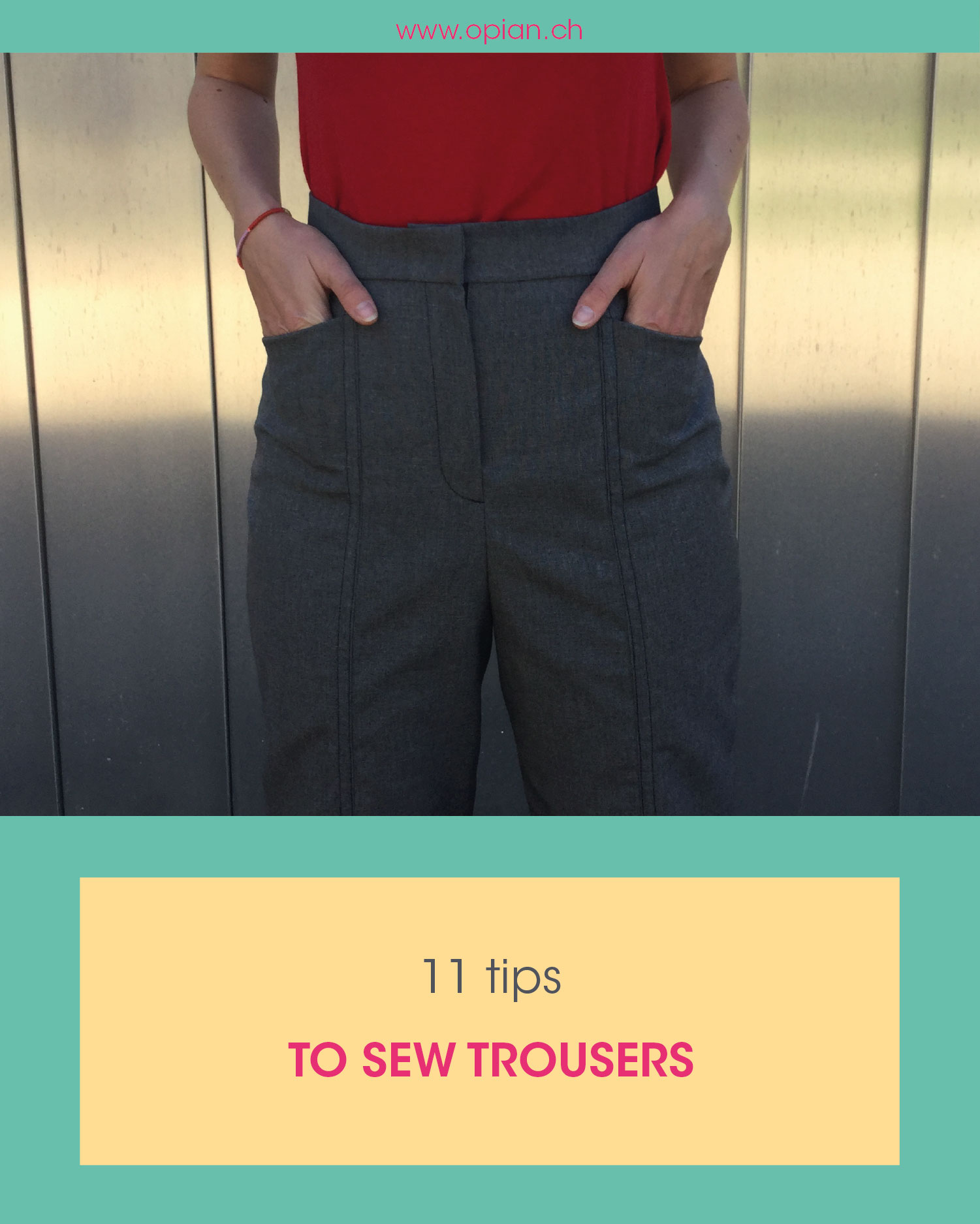Sewing tips | 11 tips to sew trousers |
Published :
02/25/2025 17:29:50
Categories :
Sewing Tips
When you start sewing, trousers are not the first project you usually start with. Indeed, it requires a certain skill, not really in sewing, but especially in fitting, because trousers require a good cut in order to be comfortable.
However, making trousers should not be sacred and unattainable because it's not the case. In this article, I offer you some advice that will allow you to sew ideal trousers.

Take precise measurements
To start your trousers project off right, take your waist, hips, small hips, inseam and crotch measurements. This will allow you to compare them to the selected trousers pattern, choose the right size and adjust before cutting if necessary.
Sew a toile
I know it's a pain, but sewing a toile can save you a lot of trouble once your pretty and expensive fabric is cut into pieces. No matter your sewing level, when you sew a sewing pattern for the first time, a toile is always recommended. Use a fabric similar to the final fabric so that the toile gives you the right indications of the elements to modify or not.
Select the right fabric
The choice of fabric is crucial to make trousers that you will like, not only the weight, but also the colour and the print. Indeed, the type of fabric is important depending on the chosen model because palazzo pants require a completely different fabric than jeans. You must also think about the need for a fabric with a little elasticity for tight trousers in order to be comfortable and keep the seams intact.
Prepare the fabric
The first thing to do before starting to cut into a fabric is to put it in the washing machine in order to shrink it as much as possible and avoid a disaster, then iron it.
Respect the grainline
In order to allow a good hang of the garment, the pieces must follow the grainline of the fabric. If this isn't the case, the garment will be biased and will have differences in movement which is rather unsightly.
Adjust the seam allowances
In general, the seam allowances are between 1 and 1.5 cm on commercial patterns and depending on the type of sewing. These measurements do not give much room for making changes during the making or later in time when your body changes. You can therefore adjust these seam allowances before cutting by going up to 2.5 cm maximum and if the curves of the pattern allow it.
Interfacing key areas
If the sewing pattern doesn't mention it, define the important areas to be ironed with interfacing such as the waistband, the facing of the fly, the opening of the non-patch pockets… this is used to hold and reinforce the fabric and prevent it from fraying during the making, but also once the garment is finished.
Iron each seam
As with any sewing project, ironing between each step is essential for a quality garment. So, iron each seam!
Choose the seams
For trousers, the key word is resistance. Indeed, the seams of a pair of pants are always under tension and must be able to resist and not crack when you move. You should favour strong seams such as the flat felled seam or the English seam depending on the weight of the fabric used.
In addition, the seam that is most stressed is that of the crotch. To make it more resistant, you can make a very light zig-zag of a millimeter or two, this will give a slight elasticity before the thread breaks. You can also reinforce the seam by making two passes one on top of the other.
Respect the steps of the fitting
It should not be forgotten that a pattern is an average and that each brand has its own standards. This is why you may have to make some adjustments so that the trousers fit you, or you may even want to make some according to your preferences. However, be careful when trying on the garment not to pull on the unsewn edges of the fabric so as not to stretch it. To do this, you can either place an interfacing band in key areas or sew inside the seam allowances to hold the fabric in place.
Hem
The last thing to do is sew the hem of the trousers. There are several types of finishing, so it's important to choose the one that matches the style of your garment. For example, a double tuck fixed by machine is ideal for jeans. While a chic pair of trousers generally requires a tuck with a slip stitch by hand to make the seam invisible.
In addition, the length also depends on the shoes you will be wearing with the pants. It's therefore important to try them on with the shoes in question.
After reading these few tips, I hope you will dare to start sewing trousers. And for those who have already sewn some, I invite you to leave a comment with your advice.

